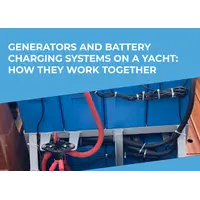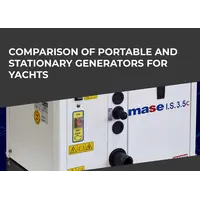TopRik team's experts explain what equipment and accessories you should buy for your new yacht. Indeed, the standard and even optional packages of any yacht do not include the entire set of equipment, gear and accessories that are required on board.
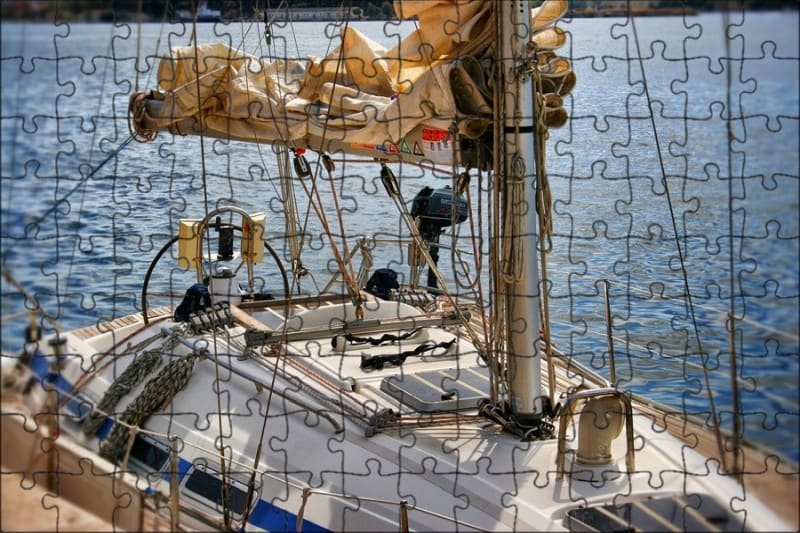
In this case, we are talking about a new boat. In the case of buying a vessel that was in operation, the list of additional expenses will increase significantly.
In this review, we will give you the most concise idea of what devices, mechanisms and accessories will help to:
- improve the safety of passengers and crew;
- achieve greater comfort on board;
- make the vessel more convenient to the crew and passengers;
- improve the performance of the yacht;
- equip the ship with devices that are practically necessary in specific operating conditions - at different times of the day, taking into account the climate, the ability to stock up on fresh water, etc.
In the case of buying a yacht through our marketplace, the entire list of additional equipment and accessories that are not included in the standard and optional equipment of the yacht from the manufacturer is agreed in advance. This will help you clearly define the final cost of the purchase and free you from the risk of imposing unnecessary equipment.
The employees of our marketplace are practicing yachtsmen, and if needed, they can give you detailed advice in person or online: through the feedback form on the website, by phone or by e-mail.
Anchorage and Mooring Equipment
In order to moor securely and safely, you need an anchor with an anchor chain equipped with a high-quality swivel and hook, as well as a set of mooring fenders.
Modern anchors provide boat retention not so much by weight as by maximum traction with the bottom. Hence - the attention of manufacturers to the design of the paws, the angle of their location in relation to the spindle and the distribution of mass.
Of course, mass also matters - there are special formulas that allow you to determine the optimal weight of the anchor, depending on the size and displacement of the vessel. In the first case - it is 1%, in the second - 10%.
As for the design of the anchor, it has already evolved far from the Admiralty design, which is currently used on large ships, including cargo ships, or on special soils - cobblestone, algae, etc.
Several types of anchors have been developed for yachts, which are designed for different types of soil. The most popular varieties today are CQR (plow) and Delta. Delta type anchors are an improved plow in which there is no articulated connection of the shares with the spindle. As a result of this change, the Delta anchor fence has improved in almost all types of soil. While CQR, due to the presence of a hinge, could crawl along a rocky bottom.
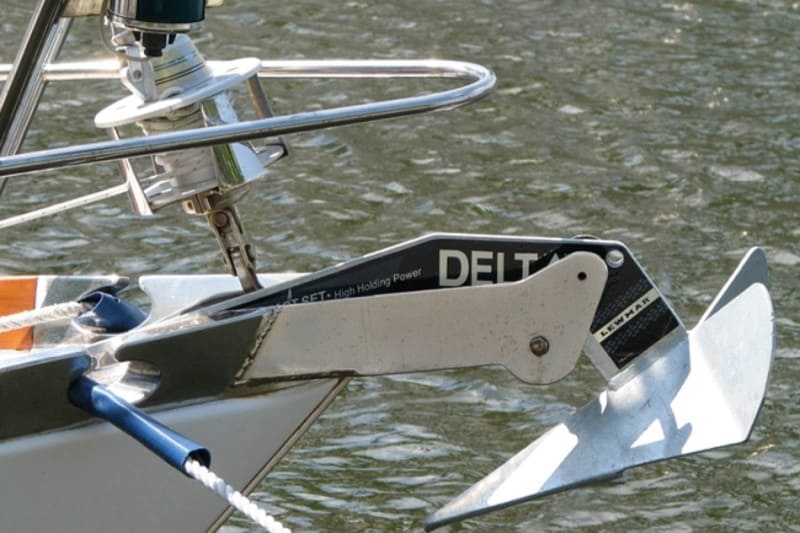
In our marketplace , the latest generation of anchor equipment is widely represented:
- delta-type anchors made of galvanized and stainless steel of various weights;
- spare anchors complete with chain and rope;
- anchor chains made of galvanized steel;
- swivels (regular and advanced), hooks, anchor chain tags, etc.
When maneuvering during mooring and setting off, your yacht and neighboring vessels will be protected by fenders made of high-quality polymer material. They will take on all the force of impact and extinguish the amplitude of the rocking of the boat. Fenders are not provided in the standard or optional equipment of yachts - they should be purchased separately. Consider that we have already selected a set of fenders for your yacht, since we have these protective products in the widest range, for all possible sizes and designs of boats:
- fenders that are cylindrical, round, pear-shaped, plate-shaped, segmented, modular;
- to protect the stern, bow, sides;
- with one or two eyes;
- with a through hole;
- mooring buoys;
- anchorage buoys, etc.
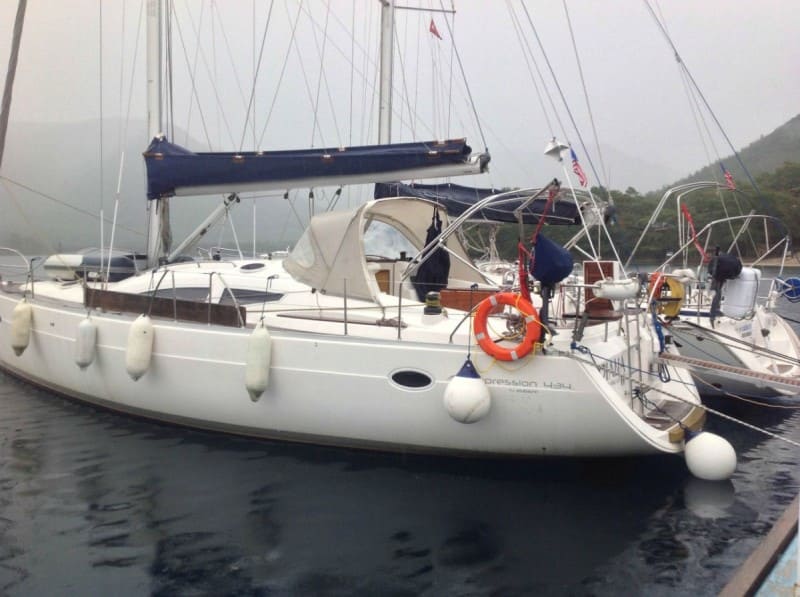
Keep in mind that all fenders and buoys are sold without ropes - we will offer the best options for ends and clamps, as well as repulse hooks and devices for wiring moorings .
Emergency and Life Saving Equipment
You must have the necessary set of emergency equipment on board the yacht, and not only to avoid fines. The mandatory set of such equipment depends on the region where the vessel is located. First of all, you must understand that the safety requirements that the state puts forward for skippers were written at the cost of human casualties. Any responsible yacht owner sincerely cares about the safety of all inhabitants on board - both passengers and crew.
Therefore, the minimum possible set that will ensure the safety of sailors should include personal water rescue equipment in the form of life jackets for all adults, children and animals (dogs, cats) on board. A life raft, a set of oars, a scoop, a bucket on a rope and life buoys are required.
Going on a sea voyage, do not forget to equip the boat with fire extinguishing equipment. To give signals to others, one should have not only a radio set, but also more primitive sound and light signaling means, as well as a powerful waterproof lantern.
For long-term navigation at a distance of 60 miles from the coast, it is required to have a radio beacon or a satellite communication buoy, as well as equipment that informs about weather conditions and weather forecasts.
In a waterproof bag with documents, also put the flag of the yacht's nationality, distress flags, and if you cross borders, you will need quarantine and customs flags.
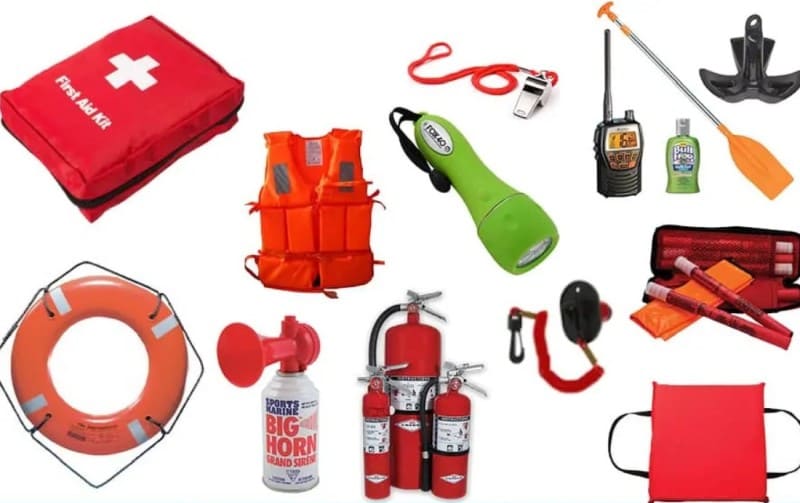
At the topRik marketplace you will find everything you need to sail safely, as well as equipment and accessories that, in the event of an accident, will help to reliably secure everyone on board until the rescue team arrives:
- lifelines and nets on them;
- fire extinguishers of various sizes;
- first aid kit;
- life rafts for a different number of passengers;
- drogue;
- simple and inflatable life jackets for children of various ages, adults and animals of various sizes;
- life buoys, as well as life poles and horseshoes for marking the location of a person overboard;
- emergency diving suit;
- set of tools;
- hand-held radio stations, direction finders, searchlights, lanterns;
- emergency lights;
- simple and pneumatic horns for giving a sound signal in the fog;
- isothermal blankets, fire blankets;
- state, MCC and signal flags, etc.
This is only a short list of emergency equipment that can be quickly purchased through an order on the marketplace. Consult with our staff - they are well aware of the requirements for completing a yacht with rescue equipment in all popular sailing regions and will select the best equipment for you at an affordable cost.
Navigation and Electronics
Relatively reliable means of positioning have been provided to skippers relatively recently. But today, not a single yachtsman who respects the challenges of the world's oceans will sail on a yacht without reliable means of navigation.
- One of the most important devices is the global positioning satellite system (GPS). Positioning accuracy provides high quality display of speed, heading, height and acceleration of the vessel. The range of GPS equipment now offered by the yachting industry is vast: radars, radios, mobile phones, emergency buoys, graphic charts, etc.
- The ASO automatic identification system helps to differentiate ships located in the water area of a certain range and exchange information with them.
- Chartplotters, or latest generation marine displays, provide seamless raster and/or vector electronic charts and show the ship's position on them. Radar, GPS and/or ASO data can be used for this. Please note that for the smooth operation of all of the above electronic navigation systems, a power source is required. Therefore, the skipper should not ignore the knowledge of paper charts and the skill of laying a course on them.
- Navigation lights are one of the oldest ways to indicate the location of a ship. Of course, they too have changed. Now, for this purpose, economical LEDs are used for equipping deck lights, interior lighting, as well as mast and side lights.
- Modern inductive compasses differ from conventional magnetic compasses in that the digitized information from them can be used by an autopilot, but they also need a power source. Gyro compasses show true north, but they are quite expensive.
- Radar on yachts can be a stand-alone device, or it can be integrated with a marine display.
- Echo sounders are navigation in the field of underwater space.
Most of the electronic navigation equipment is not included in the yacht package, even as an option.
If you like to plan long routes and have the guarantee of accurately following waypoints, we offer marine displays with built-in radar and a fast chartplotter, provided with a set of necessary electronic charts from the best manufacturers of mapping systems. You get seamless maps with a laid route, read directions, where all the important data are indicated: ports, marinas, lighthouses and other coastal and floating navigational equipment, currents, depths, etc.
If you are an avid angler, spear hunter or wreck finder, we also have marine displays with a built-in echo sounder and transom sensor for you. The entire underwater space under the yacht will be reflected on the screen, and you can mark the places of accumulation of fish or objects found at the bottom on the map with great accuracy, so that you can then return to fishing spots or for research.
Engine and System Maintenance, Electrics
To keep the yacht's systems in working order, it is required to carry out scheduled maintenance of engine systems based on engine hours, seasonal maintenance, and also in case of long-term storage.
Typically, yachtsmen try to time the maintenance of the yacht with entering the port, often with the invitation of hired specialists. During scheduled maintenance by engine hours the following works are performed:
- replacement of engine oil, gearbox, swivel column, generator;
- replacement of oil filters;
- cleaning and replacing the engine air filter;
- checking the oil level in the engine compressor;
- checking the tension of the drive belts, the condition of the impeller, the anti-siphon valve, tightening the engine clamps;
- replacement of the fuel filter of the engine;
- cleaning the mesh filter of the reducer;
- checking the condition of the sleeves of the exhaust system and the driveline of the swivel column;
- screw shaft lubrication;
- checking the performance and tension drive of the alternator belt, draining the sludge from its fuel filter;
- checking the anti-siphon valve of the generator, etc.
Seasonal maintenance is carried out annually, and if the yacht is being winterized or de-winterized. In the process, maintenance of components and mechanisms is carried out, excluding engines and transmissions.
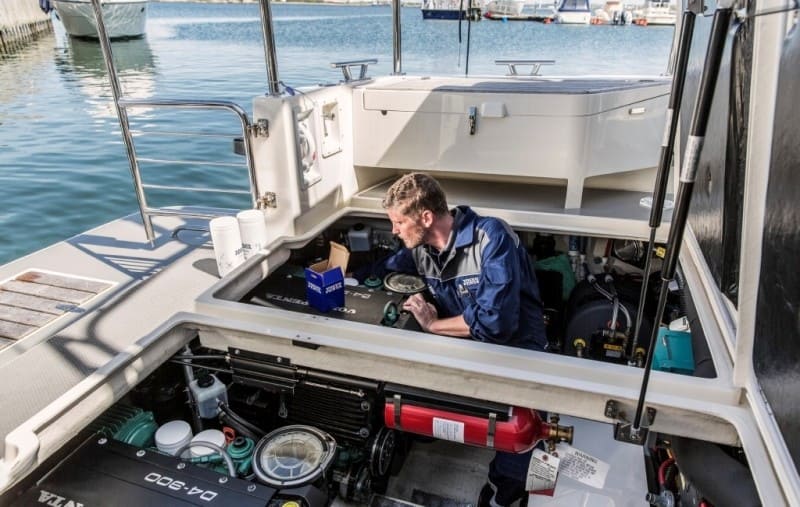
It is great if the schedule of the voyage can match the inspection schedule. But the experience of the topRik team on long passages tells that sometimes inspections have to be carried out in the middle of the ocean. Often, we all had to fix breakdowns in a situation where access to the help of third-party specialists, tools and spare parts is impossible.
We recommend having a set of necessary tools on the yacht, as well as some spare parts for repairs on the high seas - all the essential tools, repairs and parts you may need to troubleshoot motors and systems.
The common joke that everything can be repaired with duct tape is only partially a joke. And you can’t do without a supply of adhesive tape and adhesive tape during the voyage. By the way, experience shows that for long transitions there should be more than one set of tools. We also recommend that you stock up on a set of wrenches of the most common size for your yacht, and attach floats to frequently used tools.
A repair kit of all types of clamps, ties, gaskets and rubber seals can be useful in coastal navigation, and even in a long transition - that’s for sure. The same necessary things include universal marine grease, epoxy glue or resin, sealant, fiberglass.
Spare parts should be selected on board depending on the regions through which the route will pass. Just imagine what kind of equipment will endanger the life and health of passengers, how it can be repaired (replaced) and select spare parts in accordance with this possibility.
And don't forget the boatswain's chair for climbing the mast!
All of the above applies to the electrical equipment of the yacht. Even the shortest voyage should not be happening without spare batteries, chargers, fuses, connectors and cables. We offer a wide range of spare parts for the repair of electrical equipment:
Household Items
To organize a decent life on board a cruise yacht, you may need a lot of things that are not provided in any configuration from the manufacturer. It would be strange if the shipyard also took care of the availability of clothespins. Ah, you certainly didn't think of that. After all, on land, your clothes do not need such devices.
We also remind you that to keep the deck, technical and living quarters of the yacht clean, you will need mops of several varieties: hard, soft and medium hardness. At home, at best, you have one, or even none. In addition, only a mop, even three, is not enough - you will need hose spray guns to supply water.
Think also about how you will store various liquids - water or fuel. So, we add buckets and canisters to the list.
To wash dishes, you need the same tools as at home: sponges, microfiber cloths and ordinary detergents. But you won’t wash the deck with ordinary means - here you need to stock up on a special concentrate, and to clean the plastic from rust and traces of streaks, use a cleaner.
As for the dishes themselves, there is no place for crystal and porcelain. Choose practical and, if possible, unbreakable.
Other necessary items:
- salad bowls;
- sets of dishes for snacks;
- plates and bowls;
- sets of dishes;
- melamine mugs and trays;
- unbreakable cups;
- jugs and bottles for wine and other drinks;
- glasses for whiskey and water;
- glasses for wine and champagne;
- cutlery sets;
- pots, pans,
- teapots and electric kettles.

Yacht textiles must also meet the requirements of at least minimal asceticism. Therefore, it is better to forget about towels, napkins and bedding made from natural fibers - they are difficult to wash, dry for a long time and require ironing.
If the yacht is large, you will need a trolley for transporting goods on the deck.
All of the above and much more for the organization of life on board is available for purchase at our website: we have a large selection of dishes, equipment and chemicals for cleaning, containers of various sizes and other small things, the absence of which on a yacht can significantly worsen your cruise experience.
Repair Kits
For repair work, it is not necessary to buy each type of tool separately - well, in addition to a large adjustable wrench. There are well put together, well thought out repair kits for almost every repair and maintenance job possible on a yacht.
On a sailing boat, you must have a set of sailing needles, waxed threads, patches, a set of piles for working with ropes, a spinnaker tape. When repairing sails, you will need a hand guard, which acts as a hand-held "thimble" - it protects the hand from punctures and helps push the needle through.
We provide a wide range of repair kits for various yacht equipment. For example, along with a water maker, you can purchase repair kits for all types of filters, sets of clamping rings, repair kits, which include filters for replacement, a pump, rings and other spare parts, etc.
The following kits and tools will be useful for the repair and maintenance of various yacht equipment and systems:
- wrenches (preferably duplicated);
- screwdrivers;
- end heads;
- taps, dies and threaded inserts;
- gaskets for the motor;
- repair kit for the water pump of the outboard cooling circuit;
- kits for pipes and hoses;
- adapter sleeves and clamps for typical hose sizes;
- connectors and fittings for rigid hoses;
- fuses and terminals;
- wires of various sections;
- fiberglass repair kit;
- repair kit for the dinghy;
- water pump repair kit.
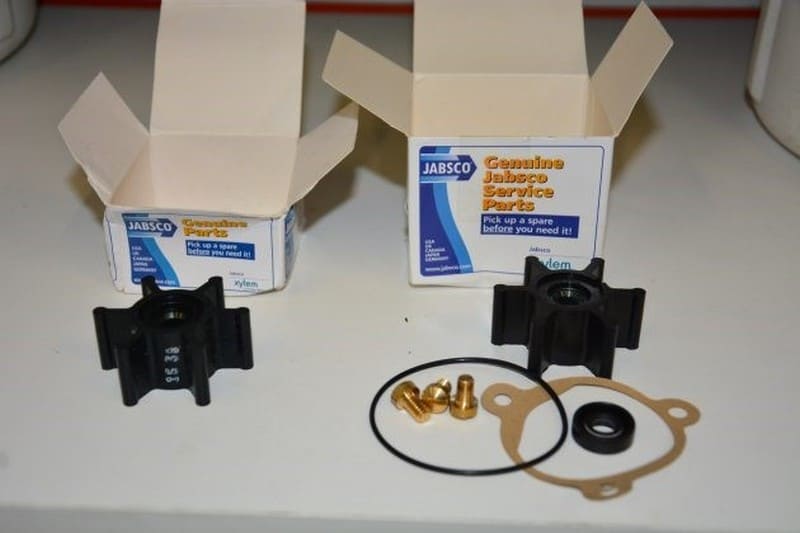
Depending on the type of cruise (coastal, offshore or long-distance cruising), you should select the right kit that will be useful during the trip, without adding unused weight to the boat.
Comfort on Board
We noted right away that the basis of comfort on board is provided by reliable equipment, safe movement on deck and an experienced skipper or crew. What is required for this, we have described in detail above.
Now let's turn to the equipment and accessories that will provide your guests and team with additional conveniences. Again, we will talk about equipment that is not supplied by the shipyard when selling a yacht. Such equipment includes sea water desalination plants - watermakers. You can read about their benefits in another article on the website - we wrote a lot about these. We have the latest watermaker models with innovative technologies available for sale, as well as accessories and repair kits for them.
Equipment to improve comfort (air conditioning, TV, audio center, etc.), which is provided by the shipyard as standard or optional, can be selected when placing an order for the delivery of a yacht.
In addition to sophisticated equipment, comfort is also provided by pleasant little things, such as soft furniture pads with sharp corners. These "little things" are especially important when you are traveling with children.
Of course, you should avoid situations with your guests or crew not having enough sunbeds, pillows or mattresses in the cockpit, foredeck or on the flybridge. It’s better to let a spare sunbed remain than have the guests competing for every free spot.
A high-quality dinghy on board is not only an opportunity to replenish supplies. It is also an opportunity to land at the port for a walk around the city and a set of new experiences. A folding bike will come in handy here - you will not complete the trip faster, but will also get some exercise. Of course, we are talking about the passengers, because the skipper and crew have their warm up regularly, especially when it comes to a sailboat.
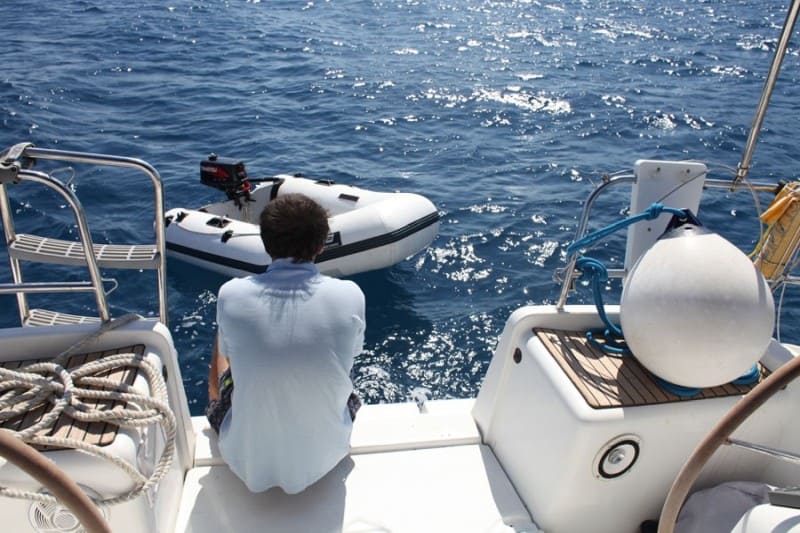
Non-slip mats add safety, which we also attributed to comfort. It is advisable to lay them in places of active movement, which are wet from splashes, or the places for climbing out of the water - for example, on a transom platform. In rain and bad weather such rugs will be even more necessary.
Think about the fact that most of the seating on the yacht is covered with soft cushions - a sofa or pouffe is inconvenient to drag to the deck, to the cockpit, to the bow or flybridge. So you may find it useful to have folding chairs, which on some yachts can also be placed in the cabins.
There are also those who love solitude - sometimes you want to have some “me time” on a large yacht or catamaran with a large number of passengers. There are also curious children on board who can stick their curious nose into a dangerous compartment. A set of locks can be a solution to both problems – not every door should be opened on a yacht.
Cleanliness is the basis of not only health, but also comfort. And if on the deck and in the technical compartments it is induced with the help of three types of mops, then a vacuum cleaner is more appropriate in the cabins. As a rule, it is also not supplied by manufacturers.
And let's not forget about such nuances as cup holders so as not to burn yourself with a hot drink, as well as ashtrays, so as not to burn through upholstered furniture and not throw cigarette butts on the deck or into the sea.
This is not a complete list of what you may need, even if you bought a yacht with maximum options. So, remember that we can complete you wish list - contact our consultants through the website, call or send a message by e-mail, and we will take care of all further troubles with any kind of equipment needed.
Thanks for reading and take care!



